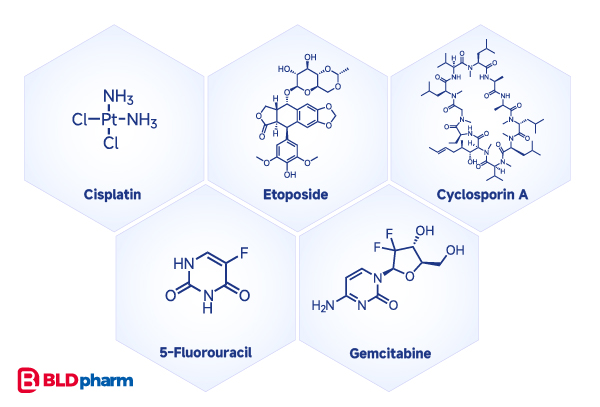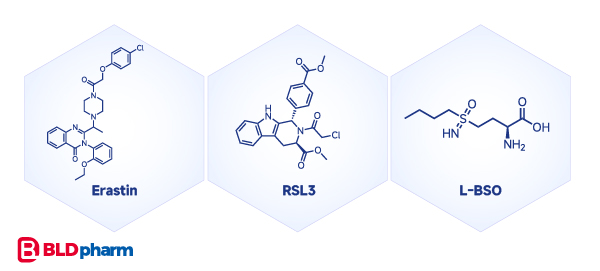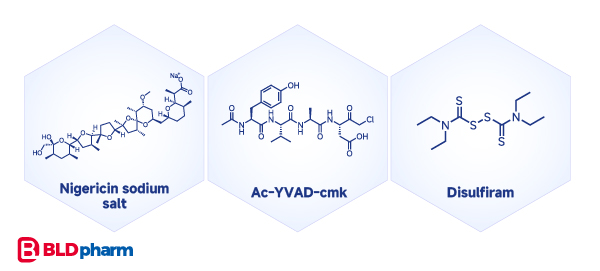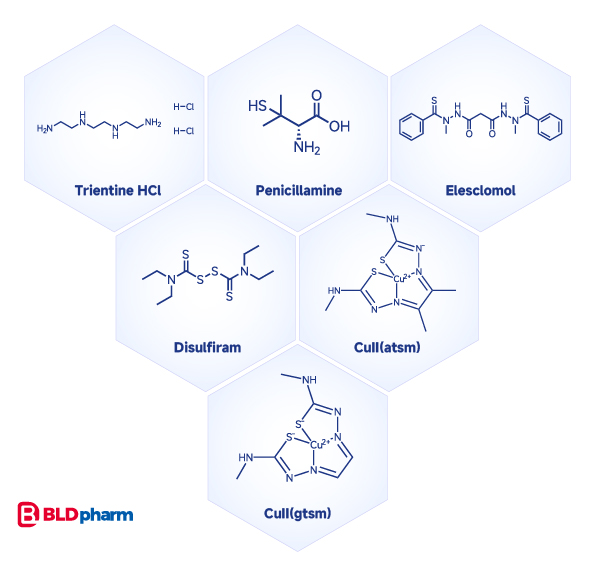BLD Insights
How to influence cell fate?
25 June 2024
In the grand ballet of life, cells pirouette on the stage of existence, their survival precariously balanced by a myriad of external and internal cues. Infections, metabolic dysregulation, or the spontaneous choreography of development can lead to a dramatic finale—a variety of cellular death forms, including programmed cell death (apoptosis and autophagy), necroptosis, pyroptosis, ferroptosis, cuproptosis, lysosomal cell death, oxeiptosis, PANoptosis, entosis, NETosis, alkaliptosis, and parthanatos. Among these, apoptosis, autophagy, ferroptosis, pyroptosis, and cuproptosis have been the most extensively studied[1].
To facilitate the study of cell death, the use of tool compounds to trigger or inhibit various forms of cell death is essential. In this issue, BLD provides a compendium of commonly used tool compounds:
Apoptosis:
Many compounds can induce apoptosis, targeting key proteins or nodes in the apoptotic process. These include DNA-damaging agents like cisplatin, topoisomerase II inhibitors such as etoposide, calcineurin inhibitors like Cyclosporine A, nucleotide analogs 5-fluorouracil, gemcitabine, and more[2].

Autophagy:
Autophagy, another well-studied cellular physiological process, has its own set of inducers, including Rapamycin and Resveratrol, Metformin, etc.; and inhibitors such as Chloroquine, 3-methyladenine, or bafilomycin A1. These compounds alter lysosomal pH, the LC3B-II: LC3B-I ratio, p-AMPK, and BECN1 protein levels[3].

Ferroptosis:
Ferroptosis, a form of cell death studied almost as extensively as programmed cell death, can be induced by compounds like Erastin, RSL3, L-BSO, and various Statin compounds. Their mechanisms include inducing cysteine deprivation, GPX4 inactivation, and GSH depletion[4].

Pyroptosis:
While pyroptosis has been frequently reported, unlike the aforementioned cell death modalities, representative small molecule compounds for pyroptosis induction are scarce, including Nigericin, AC-YVAD-cmk, and disulfiram[5][6].

Cuproptosis:
Cuproptosis, a novel form of cell death pathway triggered by copper (Cu), discovered by Peter Tsvetkov and colleagues in 2022, has garnered significant attention, with over 1000 publications since its discovery (data sourced from PubMed). Currently, copper ion chelators such as TTM, trientine, and penicillamineare used to inhibit cuproptosis; while the occurrence of cuproptosis can be induced by copper ion carriers like elesclomol (most frequently used), disulfiram, and bis(thiosemicarbazone) analogs [CuII(atsm) and CuII(gtsm)][7][8][9].

References
[1] Newton K, Strasser A, Kayagaki N, Dixit VM. Cell death. Cell. 2024 Jan 18;187(2):235-256. doi: 10.1016/j.cell.2023.11.044. PMID: 38242081.